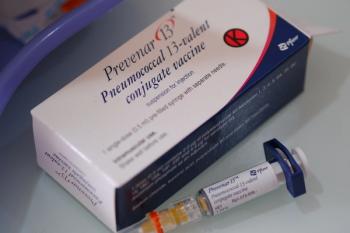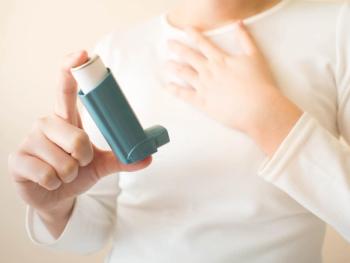
- Drug Topics July 2022
- Volume 166
- Issue 7
What to Consider with Sinusitis in 2022
Patience and antimicrobial stewardship are the keys to treating sinusitis
The COVID-19 pandemic has upended the world of respiratory diseases. Every cough and sniffle raises red flags in a clinical area that already was a drain on health care resources. Roughly 12% of adults in the United States have chronic sinusitis, and about 2.7 million physician and 234,000 emergency department visits are attributed to this diagnosis each year.1
Drawing the line between acute sinusitis and other respiratory bugs can be difficult, though. As with many other conditions driven by viral infection, there is little clinicians can really offer patients for sinusitis other than supportive care and calls for patience.
As COVID-19 transmissions are lessening, patients and providers are equally concerned about respiratory symptoms, but experts say the pandemic isn’t really changing the game plan for sinusitis.
“I think the biggest thing I try to explain to patients is the disease process,” said Jane Carnazzo, MD, of Children’s Hospital and Medical Center in Omaha, Nebraska.
Observing mucus changes can help patients determine where they are in a bout with sinusitis, she explained; green mucus is common for about a week after infection and doesn’t signal a severe infection.
“When it comes to sinusitis, your acute sinusitis is going to be someone who is sick for 10 to 14 days. You have to give a cold a good week to get better,” she added.
A high fever or copious amounts of mucus right away is a different story, she said, but this level of infection isn’t common.
COVID-19 isn’t the only worry when it comes to respiratory symptoms, Carnazzo added. Antibiotic resistance is a real problem and one she said she tries to educate her patients about. Prescribing antibiotics may give patients a peace of mind regarding their symptoms, but Carnazzo said 75% of her patients don’t return for a prescription after a bit of education about what to expect and what is normal in terms of symptoms and progression of sinusitis.
Besides education, she says offering patients an alternative for symptom management can help. People like to turn to OTC remedies that dry out mucus at the first sign of illness— but, she explained, this is the opposite of how sinusitis should be managed.
“You want the nose to drain. When it comes to preventing a sinus infection, it’s the best you can do,” she said.
Saline rinses have become a popular choice among her patient population, Carnazzo added, but lavage can sometimes make symptoms worse. Instead, things like promoting crying, exposure to cold weather, and anything else that can help make the nose run work well.
The exception, she explained, is children who have issues that could increase mucus retention, immune deficiencies, and conditions including Down syndrome that may predispose a child to smaller sinus cavities. Even with these patients, though, Carnazzo explained that providers should use caution about jumping to antimicrobial treatments.
Time is an important tool in the provider’s arsenal, and many patients will improve in about a week with little intervention. It’s also to be expected that some children will appear to have chronic sinus problems, but constant antibiotic therapy isn’t an option, she noted.
“Kids in day care have runny noses all the time but you can’t just keep them on antibiotics,” she said. “It’s just a matter of trying to sort it out. Give it some time and try to get them to clear their nasal passages. Don’t try to dry it up too much.”
Pushing OTC medications isn’t much help, she added, and imaging studies like x-ray and computed tomography scans are not generally recommended for diagnosis.
The best thing health care providers can do is to get a good history and description of how symptoms developed, what they feel like, and when they are worse.
“History, symptoms, and presentation are key,” Carnazzo said, to management. “Chronic sinus issues may need imaging, but lab work and imaging are really not necessary. Just because the sinuses are plugged doesn’t mean they are infected.”
Purulent drainage is the key symptom in diagnosing an infection that needs more intervention, she said. Providers also need to remember a less common differential diagnosis: foreign objects.
Foul or smelly drainage—especially on just 1 side of the nose—is a red flag that something may be stuck in the nasal cavity, Carnazzo said.
Overall, the best practice for sinusitis is to stress patience and exercis- ing restraint when it comes to antibiotics and medications that dry mucus. Mucus is an annoying symptom, but drainage is what sinusitis needs.
“We’re always looking for a quick and easy fix, even if there isn’t one,” Carnazzo added.
For symptom relief, Carnazzo tends to point parents to menthol products, hydration, and humidifiers rather than OTC medications. If antibiotics are needed, Carnazzo says amoxicillin is the first choice, while zithromax is not recommended because of resistance. The lowest-spectrum antibiotic is always best to use first, she added.
“Just telling them it will take time and offering comfort is key,” she said
This article originally appeared in the June issue of our sister publication Contemporary Pediatrics®.
Reference
1. Centers for Disease Control and Prevention. Chronic sinusitis. Updated January 27, 2022. Accessed May 2, 2022.
Articles in this issue
over 3 years ago
Best Practices on Discussing Birth Control for Adolescentsover 3 years ago
Quick Look: The Newest Drugs for ADHDover 3 years ago
Optimizing Outcomes for Pediatric Infusion Therapyover 3 years ago
Helping Patients Manage Diabetes Burnoutover 3 years ago
Welcome to the Apothekeover 3 years ago
Novel, Dual-Targeted Treatment for T2D Is FDA ApprovedNewsletter
Pharmacy practice is always changing. Stay ahead of the curve with the Drug Topics newsletter and get the latest drug information, industry trends, and patient care tips.















































































































